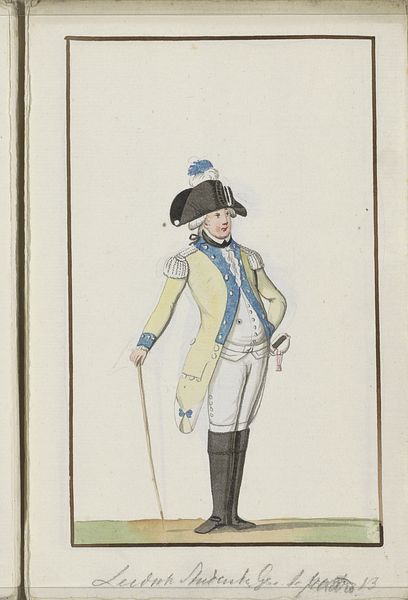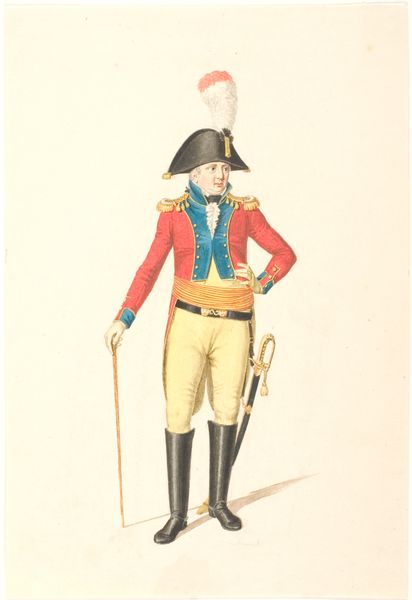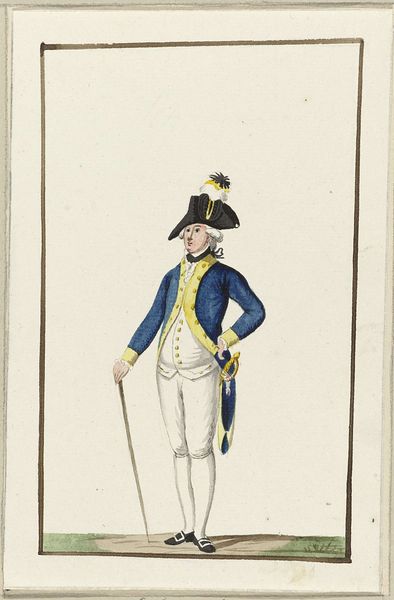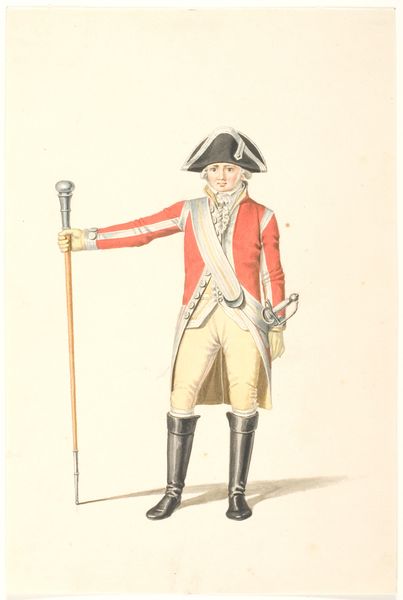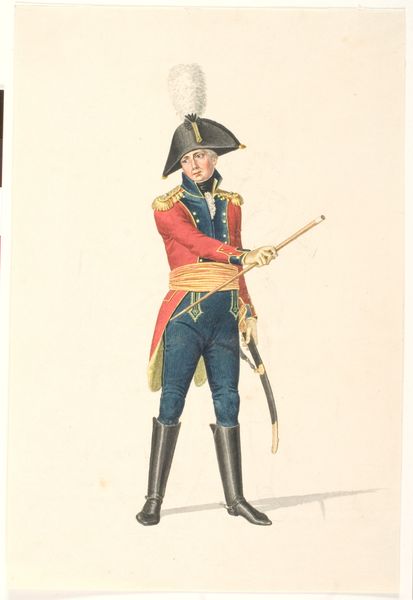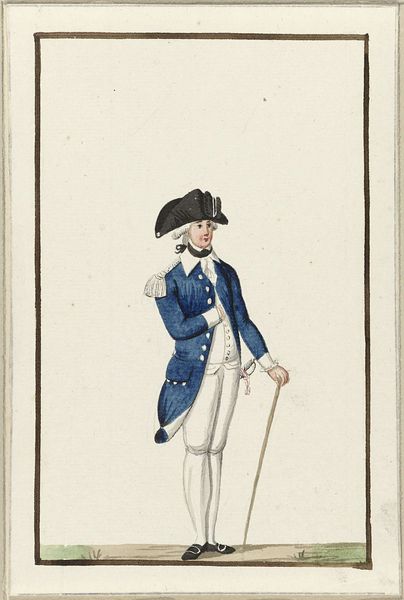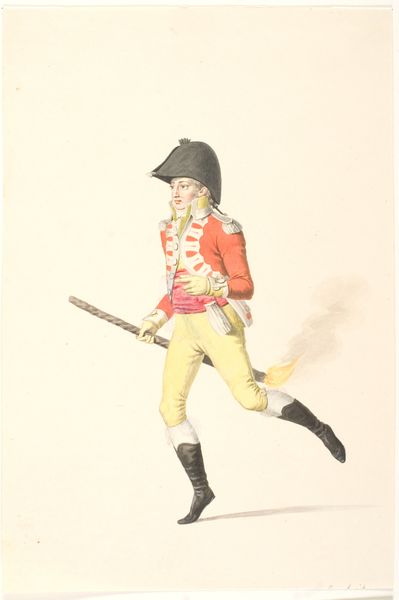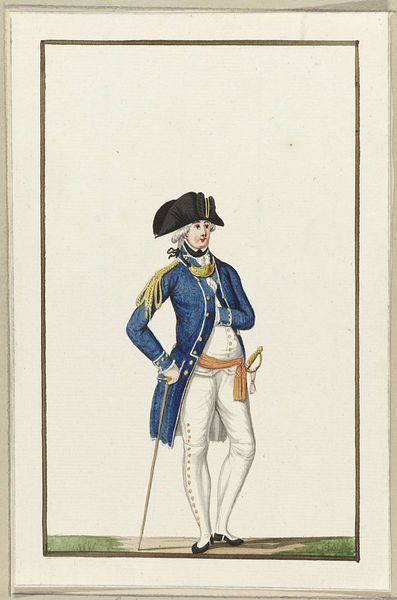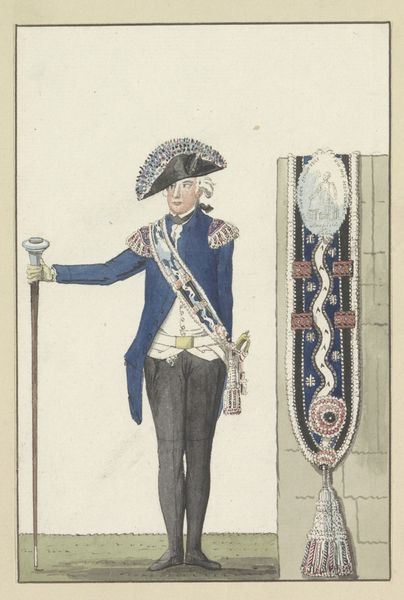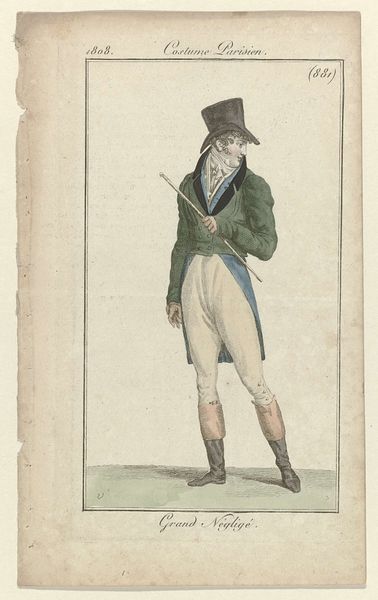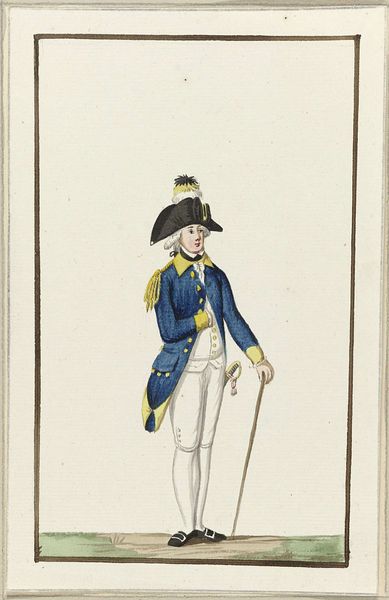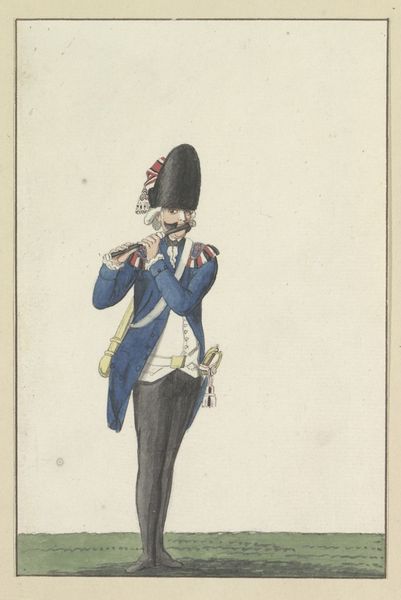
Montering van de infanterie van het exercitiegenootschap van Leidse studenten, ca. 1785 1789
0:00
0:00
anonymous
Rijksmuseum
drawing, paper, ink
#
portrait
#
drawing
#
neoclacissism
#
paper
#
historical fashion
#
ink
#
genre-painting
#
academic-art
Dimensions: height 220 mm, width 137 mm
Copyright: Rijks Museum: Open Domain
Curator: What strikes me is the performative aspect—the overt display of identity, status, and aspiration, crystallized within a precise visual language. Editor: And what strikes me is that we’re viewing this on paper. Look at the weave, feel its relative thinness even through protective glass. It's humble, despite depicting such an exalted subject. Curator: Absolutely. We're looking at a drawing dating to around 1789. It depicts a member of the infantry of the exercise association of Leiden students. The piece is unsigned. Editor: "Exercise association"? It sounds more like "leisure pursuit association." Look at that meticulous tailoring. The frogging on that coat couldn't have been easy or inexpensive to produce. A display of status, literally woven into the cloth. Curator: It is about appearances, yes. The cut of the coat, the hat—all serve as markers within a social framework. This echoes ancient ideals. These students adopt military dress, connecting themselves to classical virtues like civic duty and honor. It becomes a potent symbol of aspiration and belonging, reflecting deeper societal values. Editor: But I also wonder about the conditions of its creation. The sourcing of dyes for the coloring, the process for getting those particular metallic threads for the tassels. Whose hands did that work? The unseen labor tells its own story, a contrast to the presumed leisure of the student depicted. Curator: A pertinent point. We are presented with an image of elevated status, but it’s always reliant on the unseen contributions of laborers and craftspeople. The symbols here speak volumes, if one decodes them through different cultural lenses. Editor: Right, because a surface reading misses so much. The materiality reveals that access to such garments signified social standing, and prompts one to ask: at what cost? Curator: Indeed, by interrogating the surface and considering both tangible components and cultural associations, we expand our comprehension of what such images communicate about power, belonging, and perhaps exclusion. Editor: Precisely, it brings new meaning to "the fabric of society".
Comments
No comments
Be the first to comment and join the conversation on the ultimate creative platform.
